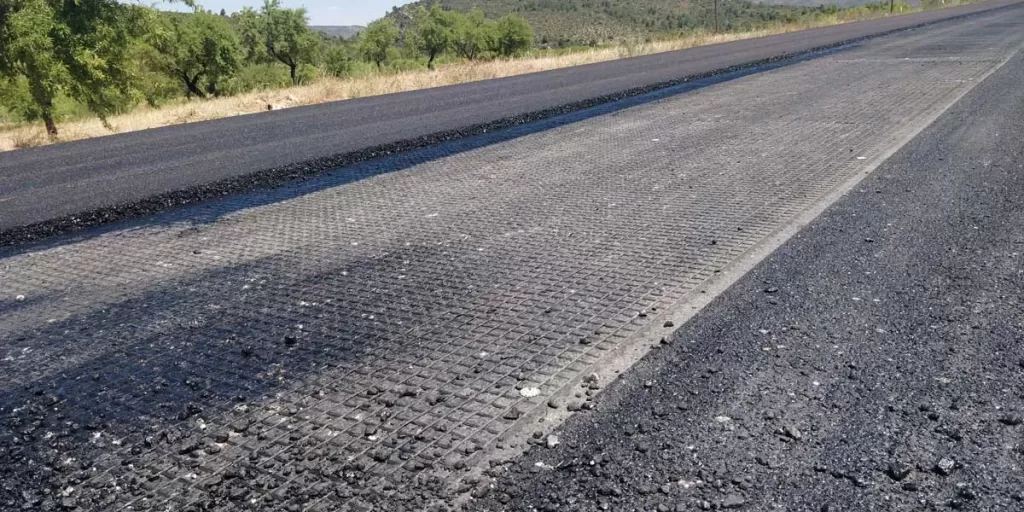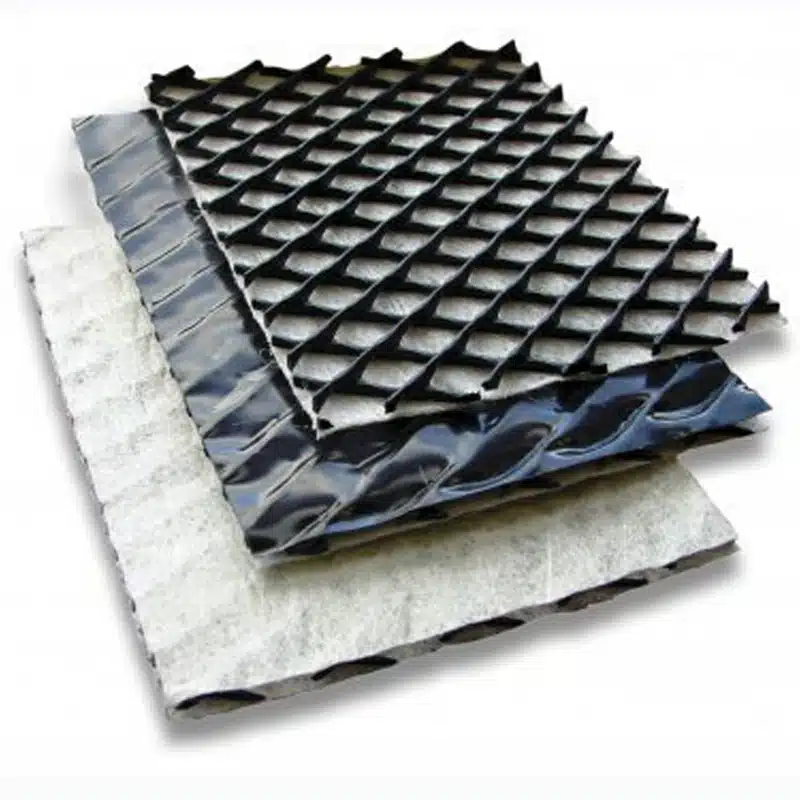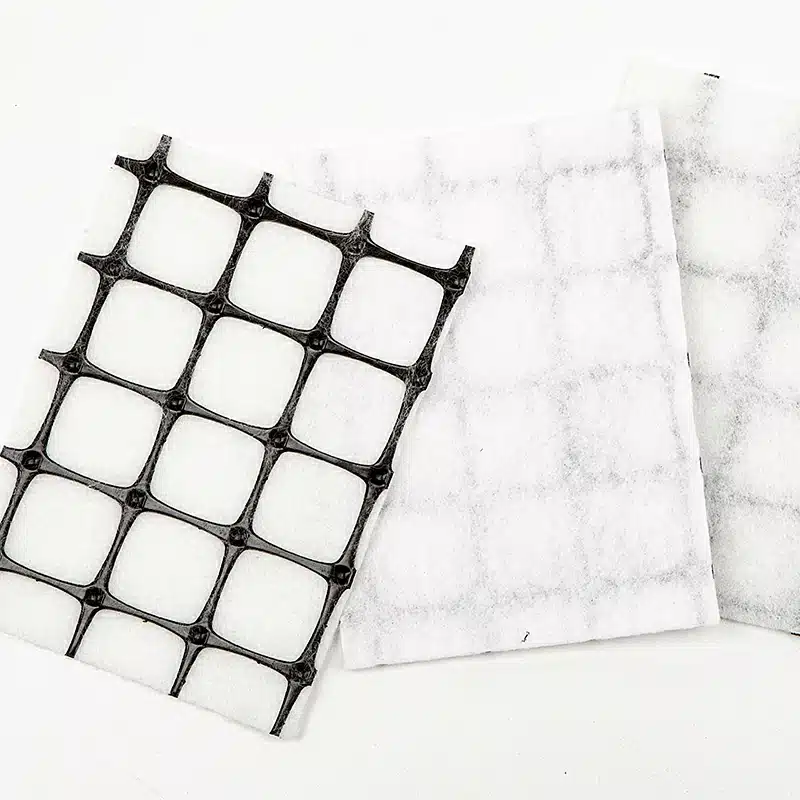+86-159 9860 6917
info@geofantex.com
geofantex@gmail.com
+86-400-8266163-44899
Geocomposite drains are innovative solutions revolutionizing drainage systems in construction and civil engineering. These advanced materials combine various geosynthetic components to enhance drainage efficiency and durability. Understanding their composition, function, and properties is crucial for leveraging their benefits in infrastructure projects.
What is a geocomposite drain?
A geocomposite drain is a type of engineered product used in civil engineering and environmental projects for efficient water drainage. These drains combine multiple geosynthetic materials, typically a geotextile and a drainage core, to create a system designed to manage and redirect water in various applications, from construction sites to landfills. Here’s a detailed overview:
Definition:
A geocomposite drain is a composite material made by combining different geosynthetic materials to provide an effective solution for managing water flow and preventing water buildup. They are designed to replace or improve traditional drainage systems such as gravel or perforated pipes.
Composition:
- Geotextile: A permeable fabric that covers the drainage core, preventing soil and debris from clogging the drainage system. The geotextile allows water to pass through while filtering out fine particles.
- Drainage Core: This is typically a perforated plastic or synthetic material, such as a molded or extruded polymer (e.g., polypropylene), which provides channels for water flow. The core ensures that water can travel freely through the material to the desired location.
Function:
Geocomposite drains are designed to manage excess water by capturing and redirecting it to prevent waterlogging or erosion. They work by:
- Collecting Water: The geotextile layer allows water to flow into the drainage core.
- Transporting Water: The core’s channels then convey the water away from critical areas, such as foundations, roadbeds, or retaining walls.
- Filtering: The geotextile also filters out soil, debris, and fine particles to prevent clogging, ensuring the drainage system remains effective.
Advantages:
- Improved Efficiency: Geocomposite drains provide a more efficient and effective drainage solution compared to traditional methods like gravel drains.
- Space-Saving: These systems are more compact than conventional drainage methods, making them suitable for locations with limited space.
- Durability: The materials used in geocomposite drains are designed to withstand harsh environmental conditions, ensuring long-term performance.
- Cost-Effective: While the initial investment can be higher, geocomposite drains are cost-effective in the long run due to their reduced maintenance needs and ease of installation.
- Reduced Environmental Impact: Geocomposite drains can be more environmentally friendly by reducing the need for excavation and large quantities of gravel or other materials.
Applications:
Geocomposite drains are used in various civil engineering and environmental applications, including:
- Road and Railway Construction: To prevent water buildup beneath roadbeds and railway tracks, enhancing structural stability and extending lifespan.
- Landfills: Geocomposite drains are used to manage leachate (contaminated water) and prevent water infiltration into the waste layers.
- Retaining Walls: These drains are used behind retaining walls to prevent hydrostatic pressure buildup, reducing the risk of wall failure.
- Slope Protection: To control water runoff on slopes, helping prevent erosion and landslides.
- Subsurface Drainage in Agriculture: They are used in agricultural applications to improve drainage in fields, preventing crop damage due to waterlogging.
Geocomposite drains are a versatile and advanced solution in modern drainage systems, providing improved performance, durability, and environmental benefits over traditional methods.

What is the difference between geotextile and geocomposite?
A geocomposite consists of a combination of one or more geosynthetics, specifically a geogrid, a geotextile, a geomembrane, and/or a geonet, bonded with another material to create a composite structure.
What is the function of geocomposites?
Geocomposites serve several critical functions in civil engineering, including **separation, drainage, filtration, and reinforcement:
- Drainage: Geocomposites efficiently collect and transport liquids or gases.
- Filtration: They prevent soil particles from clogging drainage paths.
- Reinforcement: Geocomposites enhance soil stability and load-bearing capacity.
- Protection: They guard against damage to underlying structures from external elements.
What are the properties of geocomposites?
Key properties of geocomposites include:
Certainly! Here’s how you can integrate “vertical and horizontal permeable capacity” into the paragraph while maintaining its coherence:
- Permeability: Allows fluids to flow through while retaining soil particles, ensuring both vertical and horizontal permeable capacity to manage drainage effectively.
- Strength and Durability: Resistant to mechanical stresses and environmental factors.
- Chemical Resistance: Withstands exposure to various chemicals without degradation.
- Flexibility: Conforms to irregular surfaces and maintains integrity under load.
Geocomposite drains represent a significant advancement in drainage technology, offering multifunctional benefits crucial for modern construction projects. By integrating various geosynthetic materials, these innovative solutions enhance drainage efficiency, soil stability, and structural longevity. Understanding their unique properties and applications is essential for optimizing their use in diverse civil engineering applications.



Get Free Sample
We’ll respond as soon as possible(within 12 hours)






















